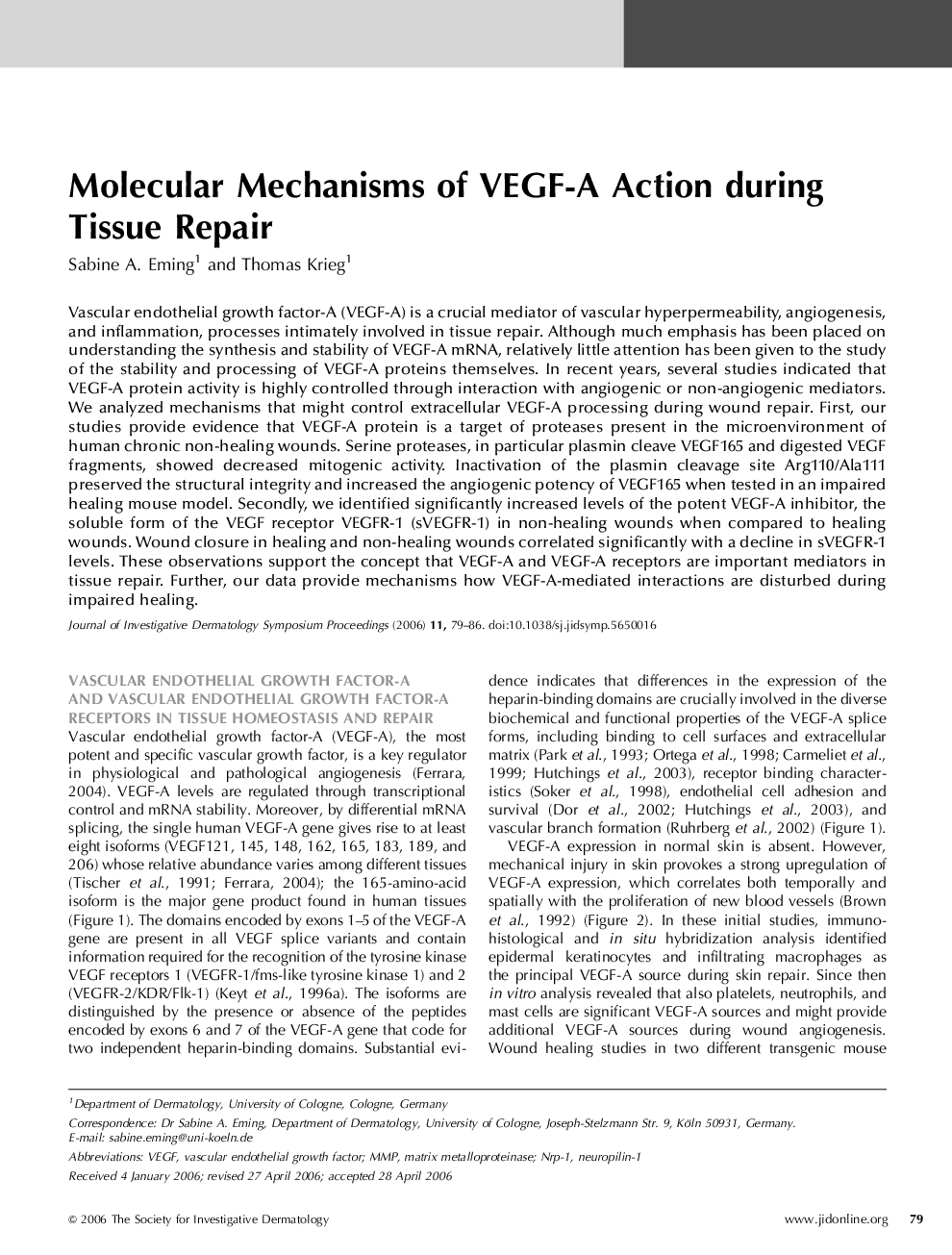| Article ID | Journal | Published Year | Pages | File Type |
|---|---|---|---|---|
| 3219016 | Journal of Investigative Dermatology Symposium Proceedings | 2006 | 8 Pages |
Vascular endothelial growth factor-A (VEGF-A) is a crucial mediator of vascular hyperpermeability, angiogenesis, and inflammation, processes intimately involved in tissue repair. Although much emphasis has been placed on understanding the synthesis and stability of VEGF-A mRNA, relatively little attention has been given to the study of the stability and processing of VEGF-A proteins themselves. In recent years, several studies indicated that VEGF-A protein activity is highly controlled through interaction with angiogenic or non-angiogenic mediators. We analyzed mechanisms that might control extracellular VEGF-A processing during wound repair. First, our studies provide evidence that VEGF-A protein is a target of proteases present in the microenvironment of human chronic non-healing wounds. Serine proteases, in particular plasmin cleave VEGF165 and digested VEGF fragments, showed decreased mitogenic activity. Inactivation of the plasmin cleavage site Arg110/Ala111 preserved the structural integrity and increased the angiogenic potency of VEGF165 when tested in an impaired healing mouse model. Secondly, we identified significantly increased levels of the potent VEGF-A inhibitor, the soluble form of the VEGF receptor VEGFR-1 (sVEGFR-1) in non-healing wounds when compared to healing wounds. Wound closure in healing and non-healing wounds correlated significantly with a decline in sVEGFR-1 levels. These observations support the concept that VEGF-A and VEGF-A receptors are important mediators in tissue repair. Further, our data provide mechanisms how VEGF-A-mediated interactions are disturbed during impaired healing.
